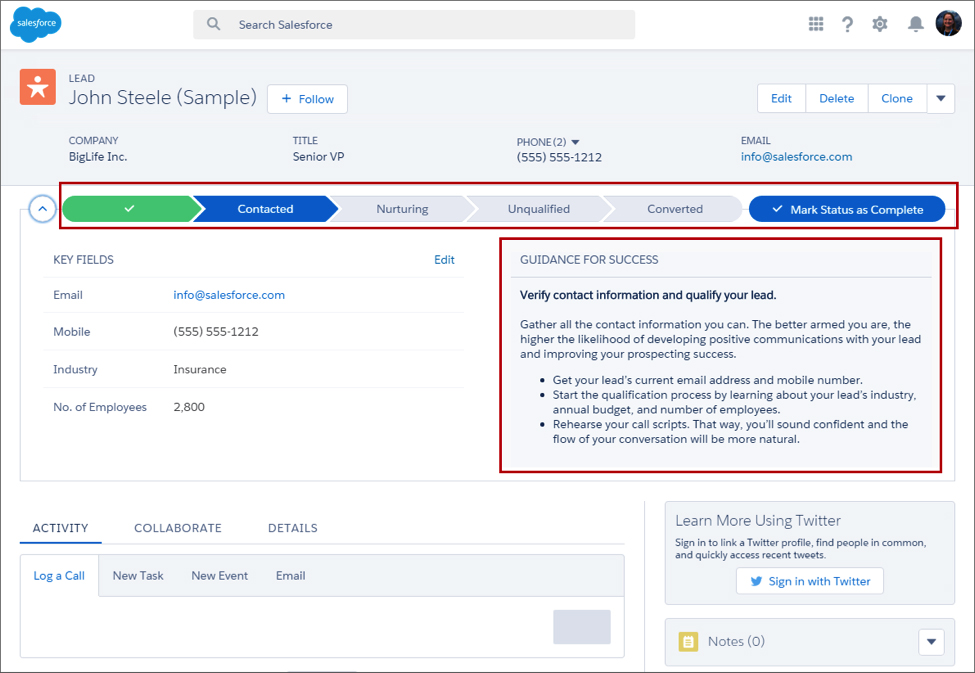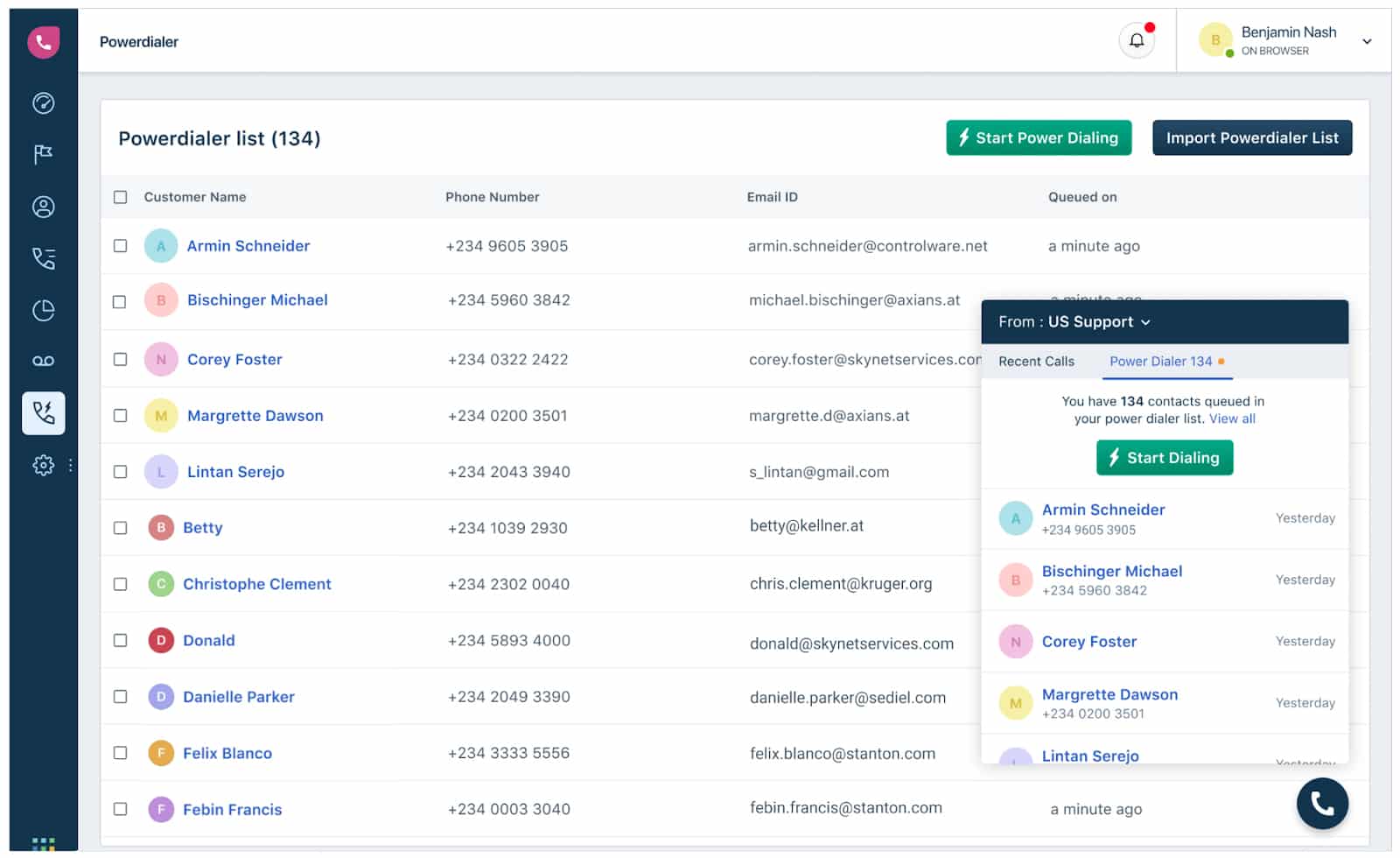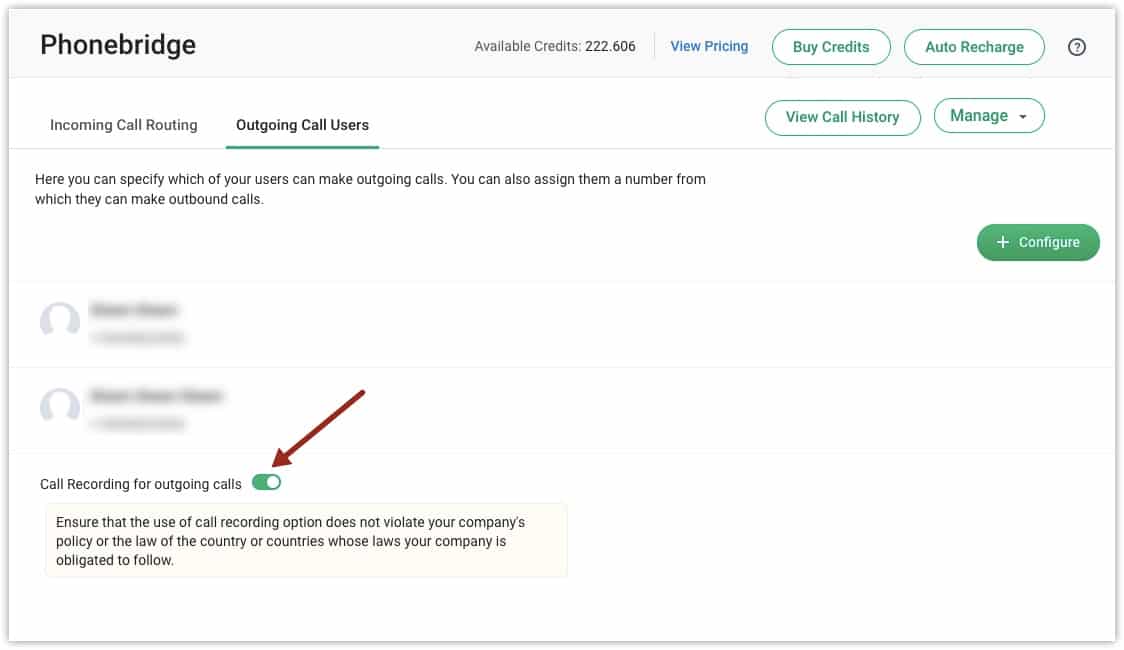Some new sales reps―and even some experienced reps―aren’t confident in their phone sales skills and constantly question how to sell over the phone. Phone sales, like other professional skills, require development. Luckily, there are various techniques you can use to help exude confidence and increase positive results. Let’s explore 12 key phone sales tips to help you better engage prospects and customers.
1. Conduct Ample Research
Conducting thorough research prior to cold calling or conducting sales calls will make the other phone sales tips on this list more seamless. Being proactive in this sense by using online resources, such as a LinkedIn profile or prospect’s website, helps you better engage prospects in a meaningful conversation by answering the following questions:
- Is this person the right decision-maker for my product or service?
- Is there any personal connection I have with this person such as having the same alma mater, being from the same area, working in the same role, or knowing the same person?
- Is there a recent event or accomplishment about this person I can reference in the call?
- What type of pain points might this specific person have?
- What types of questions could I prepare to better understand this person’s needs?
On top of guiding the dialogue, doing research on the leads you plan to call also helps you build confidence going into the conversation as you can be sure you already know a bit about the contact. You may even have a personal connection with them that could be useful during the call that you would’ve never discovered without prior research.
Pro tip: Help yourself and your sales team by using customer relationship management (CRM) software to organize information about your leads. Popular platforms like Salesforce, for instance, let you document details such as contact info, position, potential connections, and recent activity that can be used the next time you’re on the phone with them.

Salesforce Lead Record (Source: Salesforce)
2. Make Your Workspace Call-friendly
Not being in the right environment often impedes phone sales calls by making it hard to focus on the conversation. You may have many documents on your desk, multiple tabs open on your web browser, be stuck in a loud area of your office or home, or even have your cellphone sitting next to you, tempting you to check your notifications.
When placing sales calls, set yourself up with a distraction-free, quiet workspace. On your computer, only have tabs relevant to the call you’re making, such as the contact profile or lead list. The only paper documents on your desk during this time should be a pad for note-taking or a printed version of your lead list. Lastly, keep your cellphone hidden so you aren’t tempted to check it constantly.
3. Master Your Script
When specifically talking about how to sell over the phone during cold call introductions, writing and mastering scripts is an essential component for success. As far as phone sales tips, having a well-written script helps you kick off and adapt the conversation as alternative scenarios happen during the interchange.
It’s also useful to create scripts based on different contexts of the call. You might have one script for appointment-setting cold calling, another for handling a gatekeeper, and one for qualifying a lead. Each of these would also have scenario-specific alternatives. For example, let’s say you did your introduction and selling proposition, then the lead indicated they weren’t interested because of a specific objection like the cost of your product.
Included in your script would be alternative dialogue based on cost or other budgetary constraints. Additionally, you would have conversational talking points for other potential sales objections, such as fear of changing to your solution or that they’re happy with their current provider.
While a script is great for navigating a conversion, avoid reading it verbatim as this can come off as robotic, which is why we emphasized “mastering” your script, not just writing one. To help you get started, check out our how-to guide on writing cold calling scripts. Included in the article are also free downloadable templates and script examples to give you additional insights.
4. Project High Energy
While making cold calls may seem tedious and boring, it’s important to give the perception of having high energy so you don’t bore leads even though you’re doing repetitive work. One solid phone sales tip to help in this area is to stand while calling.
Standing projects your voice as louder and more vibrant than if you were sitting as there’s less physical pressure on your diaphragm and lungs. It can also help you feel more confident and in control of the conversation and enable you to come off as more natural since you’re able to do things you do normally while talking, such as gesturing. We recommend using a cordless phone or headset so you can also walk around during the conversation.
High energy levels also show the person you’re confident in what you do and passionate about what you have to offer. A low-spirited salesperson comes off as unsure of oneself. This makes them tough to listen to and can be a major barrier to keeping a lead interested, even if your solution is extremely useful to them.
5. Have Confidence in What You’re Selling
Continuing the confidence aspect in learning how to sell over the phone, be committed to what you’re selling. If you truly don’t feel the unique selling proposition you present matches reality, consider finding a new company to sell for. You be able to embrace your role as a salesperson and not be tied down by sales stereotypes, such as “sleazy” or “pushy.”
Shift your mindset to see yourself as someone who adds value and helps solve problems rather than just selling a product or service. Conveying this is as easy as asking questions to understand the prospect’s needs fully, presenting potential options, and even being able to admit if your solution isn’t the best fit for them. In time, this also increases your own job satisfaction as believing that what you do benefits others is a huge career motivation.
6. Weave in Personal Details
When you’re on the phone with a lead or prospect, don’t be afraid to show your human side. For example, you can integrate humor, ask about their day, or mention something you learned about them during your research, such as saying, “I couldn’t help but notice you also know Cameron Eck.”
This not only breaks the ice, but it also makes you into a more memorable sales rep relative to the other sales calls they may receive. You might even catch their interest by referencing a specific personal connection you found during your research that gives you a huge leg up on the competition.
7. Don’t Stop Dialing
During cold calling and sales presentations, you’ll experience rejection—lots of it. That makes it advantageous to understand ahead of time to keep on calling. Sales is a numbers game, and you can’t let a prior negative experience on a call impact your next one.
There’s a somewhat famous tip in the sales world called the 100 calls method where your mindset should be to go into calling and make it a goal to place 100 calls as quickly as possible. This accomplishes two major purposes.
The first is to shift your expectations to where you expect—and therefore lose fear of—rejection so that any other result is a pleasant surprise. The other purpose is that it keeps you focused on making the next call rather than stewing on the previous one. Going in with this mindset will increase volume opportunity through more dials, generate more leads, and ultimately close more deals.
Pro tip: Invest in a CRM with power dialing capabilities so you can go through your lead lists more quickly, hands-free, based on your preset contact list. The Freshsales CRM, for instance, integrates with its native Freshdesk platform to place outgoing calls. The contact list from Freshsales can be used as a power dialing list in the Freshdesk module.

Freshdesk Power Dialer (Source: Freshworks)
8. Keep the Focus on the Prospect
One of the key aspects of learning how to sell over the phone effectively is prioritizing the prospect. During a sales call, make sure you’re respecting the prospect’s time, especially if the call was scheduled within a certain time frame. Don’t show up late to a scheduled sales call. When cold calling, indicate that you value their time by stating something like “Is this an okay time to chat?” before going into your introduction.
Furthermore, utilize questions to fully understand the prospect’s pain points, budget, and priorities of a product or service provider. Ideally, you have pre-written questions during the prospect research phase as part of your preparation for the call. You’ll find some useful example questions to ask in our article describing how to prioritize leads using the BANT method, which stands for budget, authority, need, timeline.
Many sales reps have a backward viewpoint that they should keep detailing how great their product or service is to keep conversational power. However, it’s advantageous to make the discussion more about the lead, especially in introductory calls since it gives you more information about how you can help solve their pain points.
While it’s important to guide the conversation, control can still be maintained even if you aren’t doing a majority of the talking merely by asking questions. In the end, the purpose of most sales phone calls is to make introductions to generate or qualify a lead by determining buyer fit.
9. Record Your Calls
Because sales conversations over the phone can take getting used to, it’s a great idea to record them. This allows you to self-evaluate your performance and make tweaks where necessary. Also, sales management leaders can use these call recordings for coaching opportunities to improve their team’s skills and techniques and in so doing, improve sales performance.
Many CRMs, such as Zoho CRM, have telephonic capabilities either built-in or through integration allowing you to easily record outbound calls. After recording the calls, those conversations are saved in the CRM database system to be viewed by you, your manager, or any other sales personnel with access.

Zoho CRM Phonebridge Enable Call Recording (Source: Zoho)
10. Prepare for Objections
Improvising during sales phone calls is already difficult because you don’t have the opportunity to read the prospect’s body language. Things get even more chaotic if you aren’t prepared to overcome sales objections. Prior to placing calls, list potential objections a lead may have to what you’re selling and have written responses ready and mastered.
Include these in your scenario-based calling scripts and at a minimum, have responses lined up for objections due to budgetary constraints, fear of change or committing to your solution, preferring a familiar brand, and satisfaction with the current provider. Being prepared will keep you sharp and confident on the phone.
11. Invest in Continuing Professional Development
No matter how much you think you’ve mastered any or all of these phone sales tips, there’s an ever-evolving landscape in terms of the best ways to approach sales conversations. That’s why sales training should be a never-ending part of individual and sales team development.
In the scope of how to sell over the phone, training helps reps adopt new phone sales tips and techniques, and reinforces current skills to improve sales performance. While there are hundreds of professional sales training courses to choose from, we’ve identified 17 top sales training programs broken down by sales focus.
12. Establish Next Steps Clearly
Even if you follow all of these phone sales tips to perfection, the job isn’t finished until you have a plan to move the prospect to the next stage of the sales funnel. This is the equivalent of a call to action on an email or online advertising campaign. The next step should be predetermined before dialing based on your research and calling campaign objectives.
For example, during introductory sales calls, you might attempt to schedule a presentation or product demo for a later date. To do this you could close with a call to action (CTA) of “I’d love to schedule a quick presentation next week to show you how we can help accomplish your specific goals.”
A next step should even be used if the lead is expressing disinterest in what you offer. For instance, if a lead didn’t want to schedule a call for a later date, you might say “no problem, but if it’s all right with you, I’d love to get your email address so I can send you some marketing materials to have for reference.” You can also request permission to touch base with them again at a later date to see if their needs have changed.
Phone Sales Statistics
For more insights on how incorporating these phone sales tips can help you improve sales performance, check out some of these key phone selling statistics:
- 57% of C-level and VP buyers prefer to be contacted by phone
- You only have 5 to 10 minutes on average to prove your value to prospects over the phone
- On average, it takes between six to eight calls per prospect before having a successful cold call conversation
- 46% more calling conversions are made on Wednesdays compared to Mondays
- Heavy background noise is one of the top three issues that can turn away even the most interested potential customers on a phone call
- 75% of prospects are willing to make an appointment or attend an event based on a cold call alone
Bottom Line
Whether you’re using the phone to place cold calls or conduct sales presentations, it’s essential to exhibit confidence and problem-solving salesmanship during your conversations. These expert phone sales tips, especially when used in conjunction with sales enablement tools like a CRM will help you be more confident in your sales pitch. You’ll be able to engage your prospects more effectively and keep your skills sharpened to yield better sales performance.